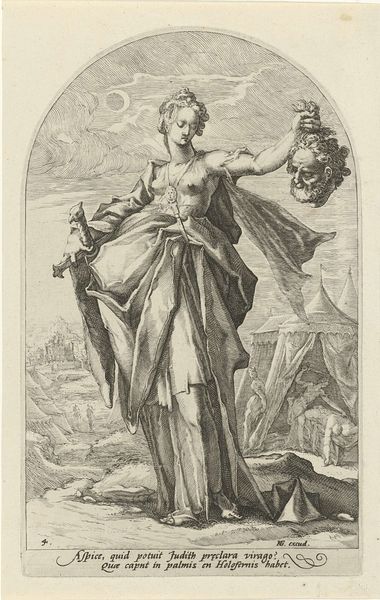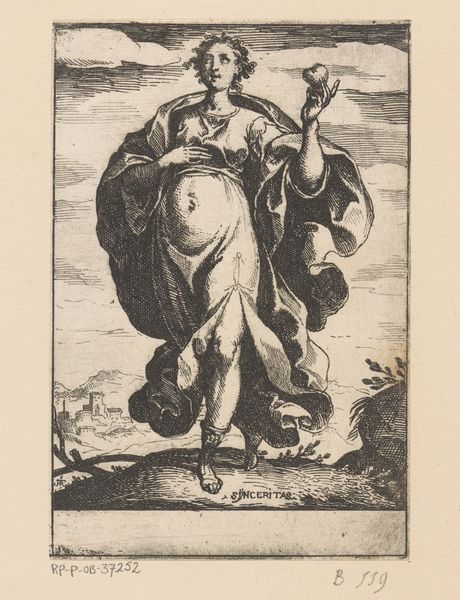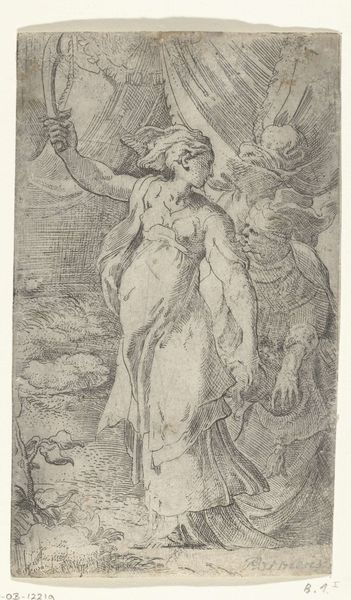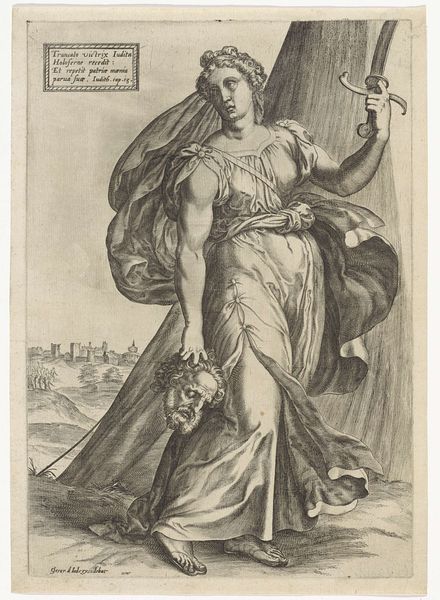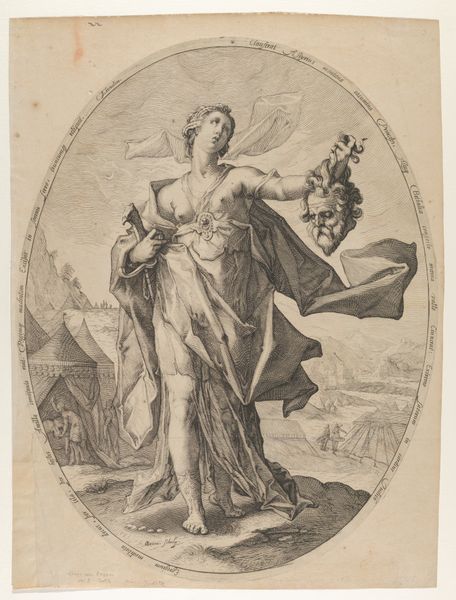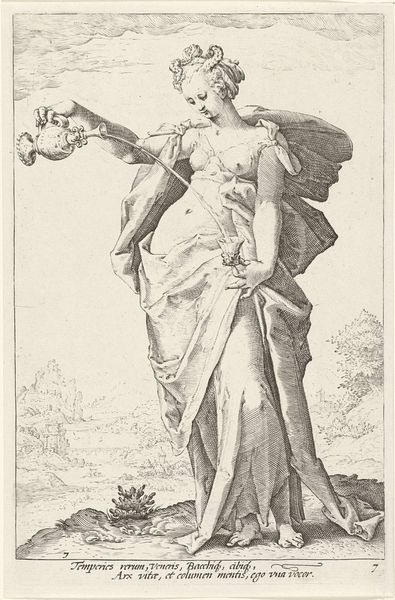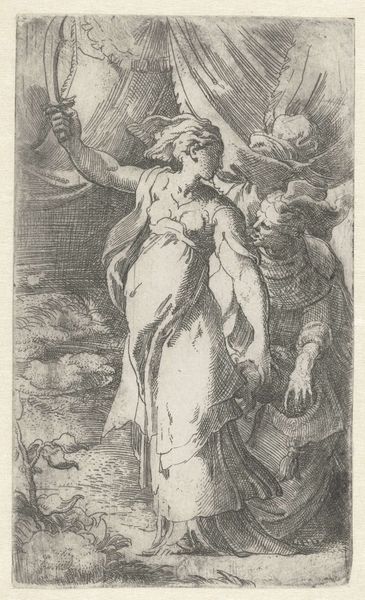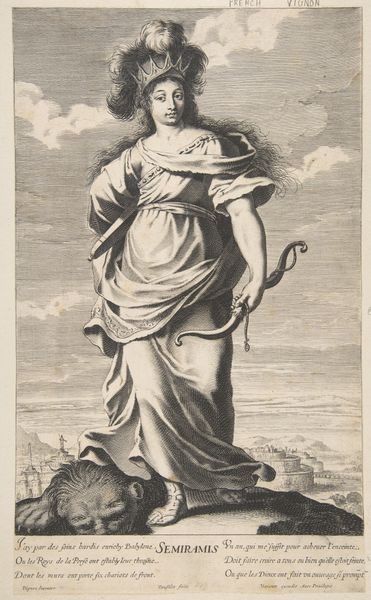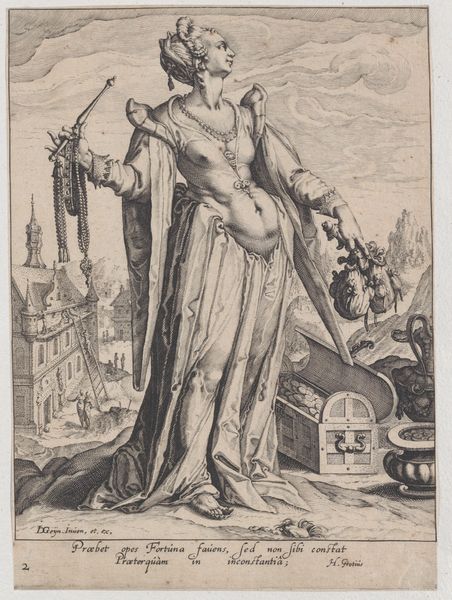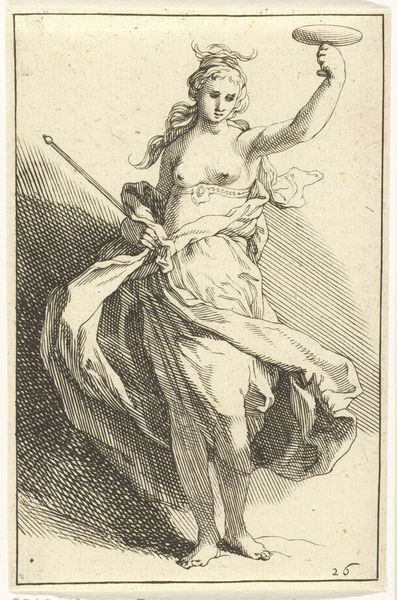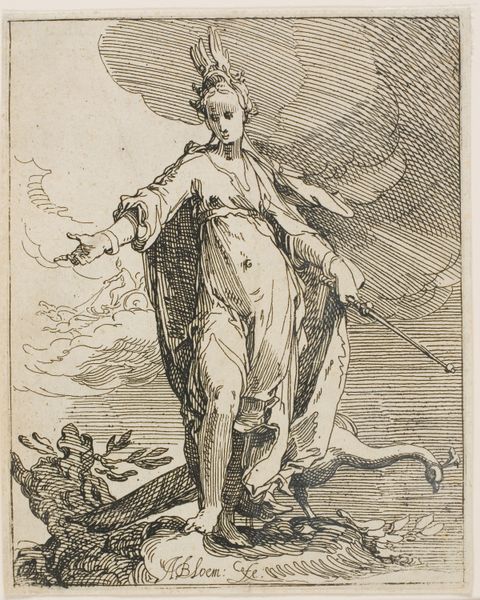
engraving
#
allegory
#
baroque
#
figuration
#
history-painting
#
engraving
Dimensions: height 142 mm, width 114 mm
Copyright: Rijks Museum: Open Domain
Boëtius Adamsz. Bolswert created this print of Minerva with armor and owl. It’s a fascinating example of how classical mythology was re-imagined in the Dutch Republic. Minerva, the Roman goddess of wisdom and strategic warfare, stands here as a symbol of civic virtue. The owl, a common attribute, reinforces her association with knowledge. But why would a Dutch artist in the 17th century turn to Roman mythology? Well, these images offered a visual language for discussing contemporary issues. In a society undergoing rapid commercial expansion and political change, Minerva could represent the values of prudence, reason, and military strength necessary for a successful republic. To truly understand the print’s significance, we might look into emblem books, popular at the time, which paired images with moralizing texts. These can reveal the specific meanings associated with Minerva and the owl. We can also consider the patronage system, exploring who commissioned or purchased such prints and what their motivations might have been. Ultimately, the meaning of art is contingent on its specific social and institutional context.
Comments
No comments
Be the first to comment and join the conversation on the ultimate creative platform.

